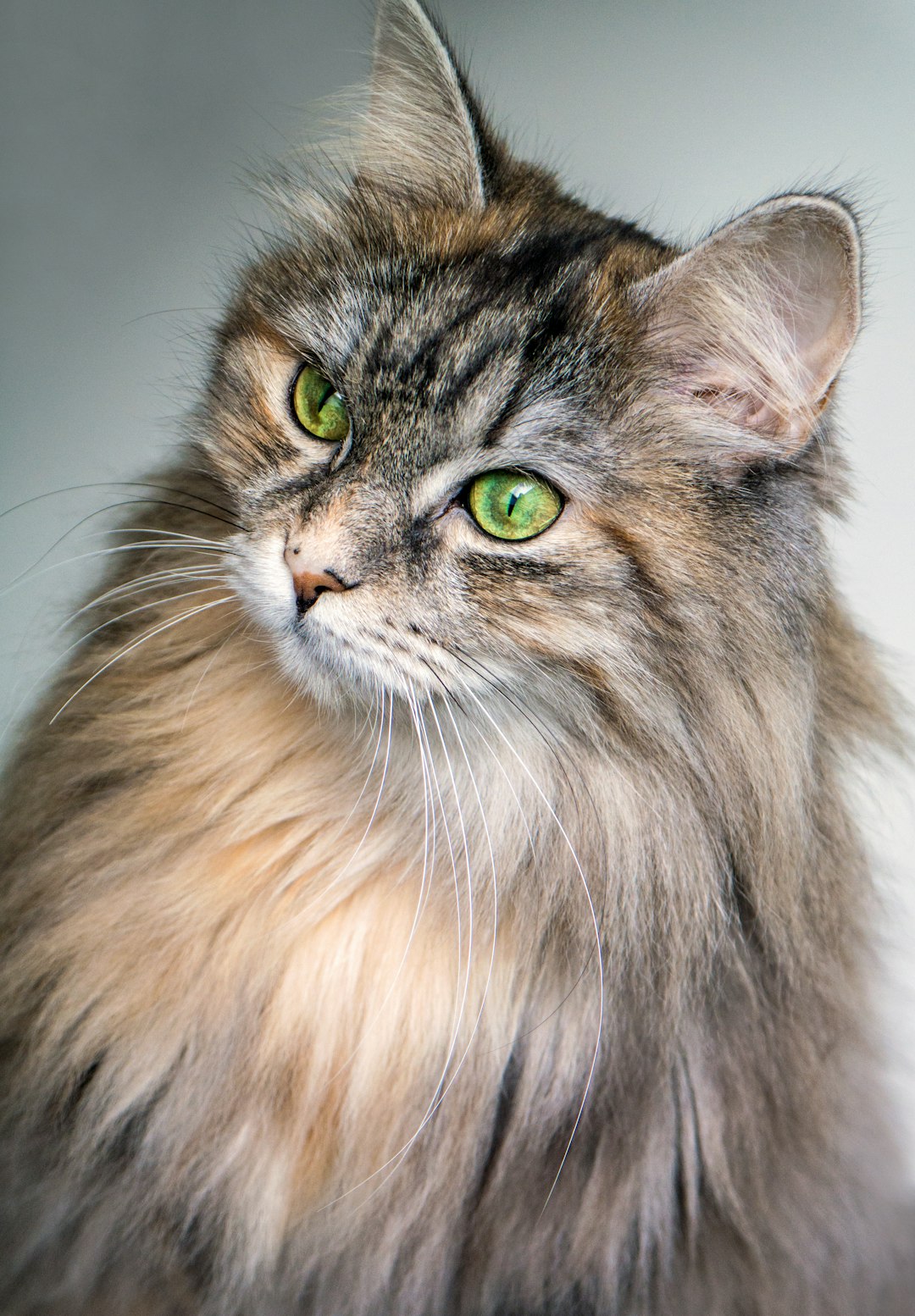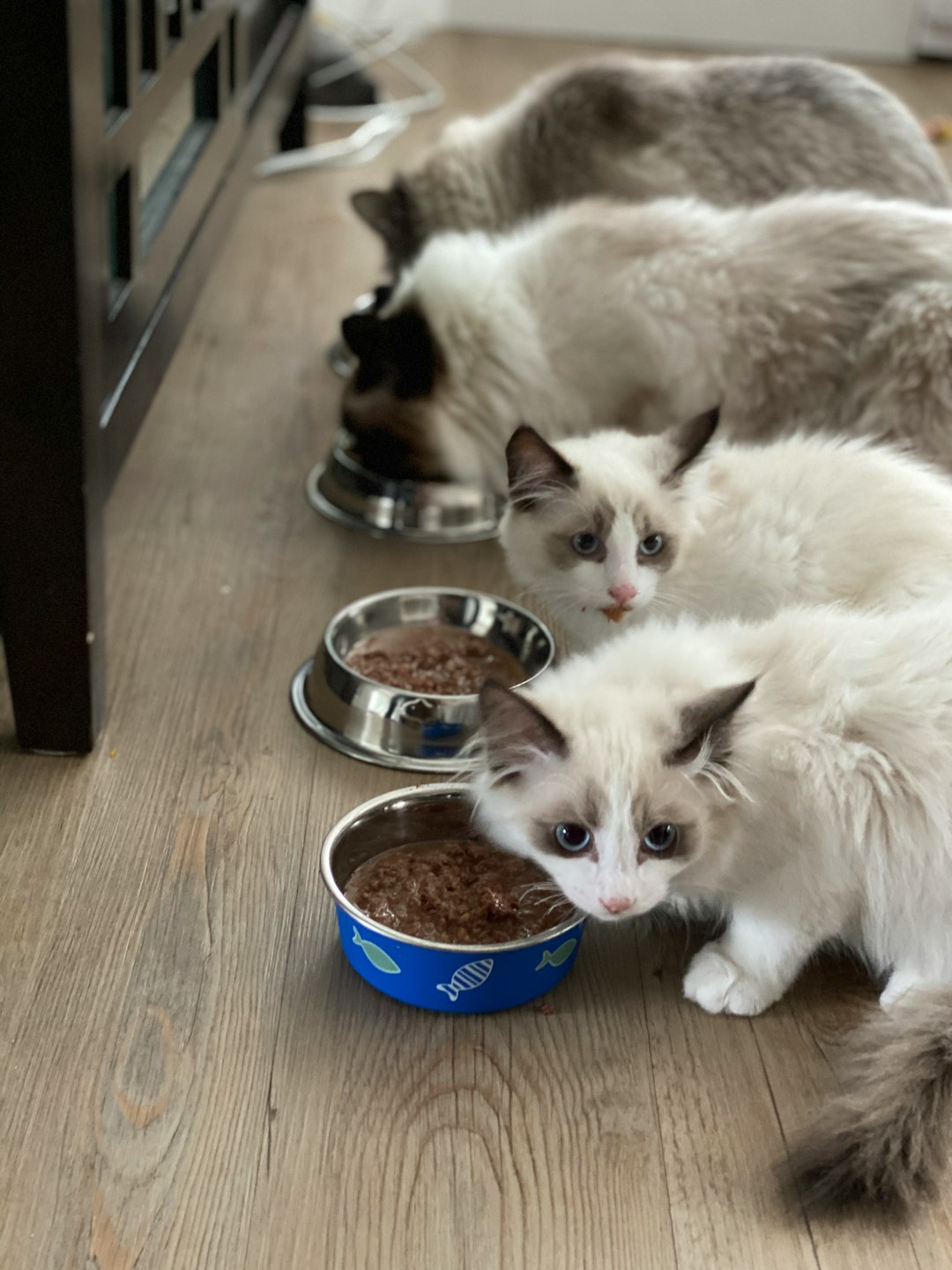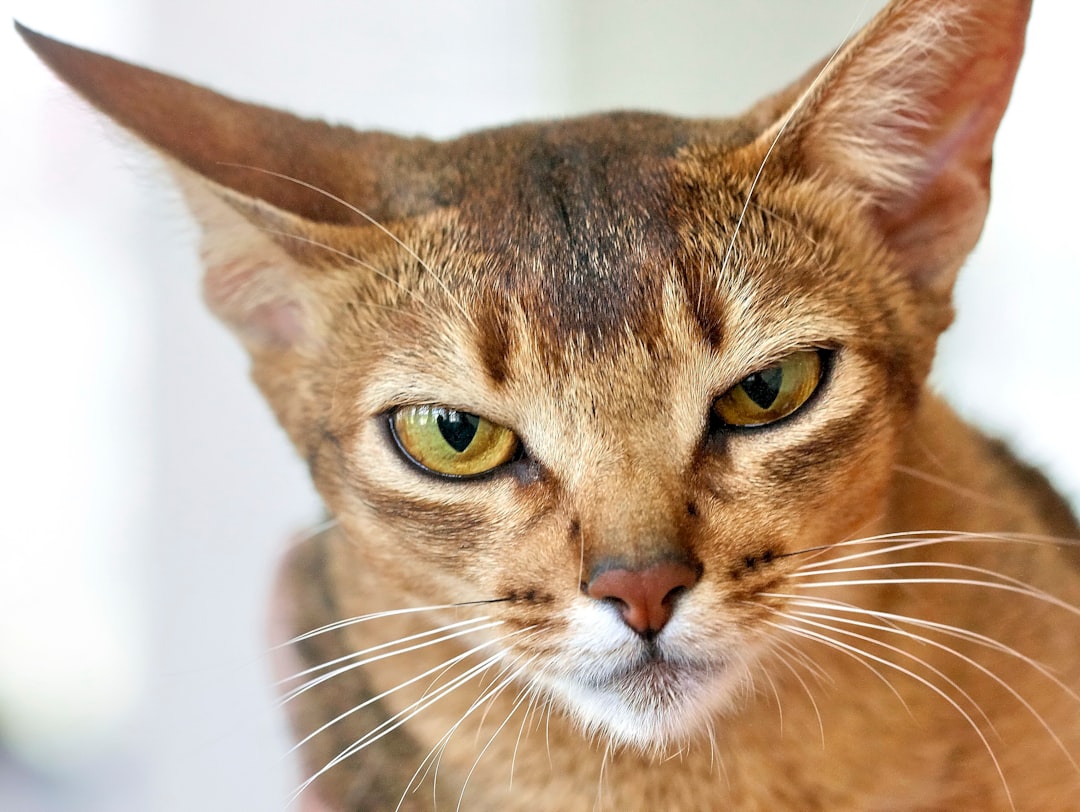If you’re a cat owner with a penchant for unique houseplants, you may find yourself drawn to the fascinating Venus fly trap. These carnivorous plants are not just captivating; they also add an unusual touch to your indoor garden. However, as charming as they may be, it’s crucial to consider your feline friend’s safety. This leads us to the essential question, are Venus fly traps poisonous to cats? Understanding the implications of having these plants in your home is vital for ensuring the well-being of your pets. In this blog post, we will explore the nature of Venus fly traps, signs of potential poisoning, and practical measures you can take to protect your cats. Additionally, we will highlight other common houseplants that may pose a risk and discuss the benefits of cultivating Venus fly traps alongside effective care tips for pet owners. Let’s dive into the world of Venus fly traps and cat safety, ensuring your home is a safe haven for both your plants and your beloved pets.
Understanding Venus Fly Traps
What are Venus Fly Traps?
Venus Fly Traps are fascinating carnivorous plants scientifically known as Dionaea muscipula. Native to subtropical wetlands in the United States, specifically North and South Carolina, these unique plants are renowned for their extraordinary ability to capture and digest insects. Their striking appearance, with lobed leaves resembling jaws lined with tooth-like projections, adds an exotic touch to any indoor garden. Here are key features of Venus Fly Traps:
- Trap Structure: Each trap consists of two hinged lobes, which snap shut when prey touches the sensitive trigger hairs.
- Lifespan and Size: A fully-grown Venus Fly Trap usually reaches about 5 to 6 inches in height.
- Growth Needs: These plants thrive in bright, indirect sunlight and require moist, acidic soil.
How do Venus Fly Traps Work?
The mechanism of Venus Fly Traps is a marvel of nature, showcasing a blend of biology and evolutionary strategy. When an unsuspecting insect lands on its lobes, the following sequence unfolds:
- Triggering: Two to three touches on the sensitive hairs within the trap trigger an electrical signal.
- Closure: In less than a second, the lobes snap shut, entangling the prey inside.
- Digestion: The plant secretes digestive enzymes to break down the insect over 5 to 12 days, allowing it to absorb nutrients from the carcass.
This extraordinary predatory behavior is essential for their survival, as Venus Fly Traps require nutrients that are often scarce in their native environment. While they may seem intimidating, these plants represent an intriguing aspect of plant evolution and adaptation. Understanding their characteristics can foster appreciation for their beauty while keeping a watchful eye on pet safety, particularly regarding Are Venus fly traps poisonous to cats?
Are Venus Fly Traps Poisonous to Cats?
The Toxicity of Venus Fly Traps
Venus fly traps (Dionaea muscipula) are fascinating carnivorous plants, known for their unique ability to capture and digest insects. When it comes to feline companions, many pet owners wonder about their safety. Are Venus fly traps poisonous to cats? Fortunately, these plants are not classified as toxic to cats. They possess a mechanism for trapping insects, but their components do not contain harmful substances that can endanger your furry friends.
- Non-toxic parts: The leaves and traps of the Venus fly trap do not produce any toxic compounds.
- Risk of mild irritation: While ingestion may not be lethal, a cat might experience mild gastrointestinal discomfort if it chews on the plant.
Common Misconceptions about Plant Toxicity
There is often confusion surrounding which plants pose risks to pets. Some common misconceptions include:
- All houseplants are toxic: Many people mistakenly believe that every plant can be harmful. In fact, numerous popular houseplants, like Venus fly traps, are safe for cats.
- Insects are dangerous too: The insects caught by these plants are not harmful to your cat; they are simply a source of nourishment for the plant.
Understanding these nuances helps ensure that pet owners can choose houseplants without unwarranted concern about their pets’ safety.
Signs of Poisoning in Cats
Recognizing the signs of poisoning in cats is crucial for their health and safety. While are Venus fly traps poisonous to cats? is a common question among pet owners, it is essential to know how to identify potential poisoning symptoms regardless of the source.
What to Look For
Monitoring your cat for unusual behaviors can help you act quickly if something is amiss. Here are some key signs of poisoning:
- Vomiting: Frequent or excessive vomiting is often a red flag.
- Diarrhea: Loose stools or diarrhea can indicate gastrointestinal distress.
- Lethargy: If your cat is unusually tired or unresponsive, it may be a sign of illness.
- Drooling or Foaming at the Mouth: This can indicate that your cat has ingested something toxic.
- Loss of Appetite: A sudden change in eating habits is a sign that something could be wrong.
- Tremors or Seizures: These severe symptoms necessitate immediate veterinary attention.
When to Seek Veterinary Help
If you notice any of the signs listed above, it’s crucial to act promptly. Here are key steps to consider:
- Contact Your Vet: Even if symptoms appear mild, it’s advisable to consult your veterinarian for guidance.
- Provide Information: Be ready to disclose specific details such as the type of plant ingested and the amount.
- Emergency Care: If symptoms escalate, do not hesitate to take your cat to an emergency animal clinic.
Understanding these signs can aid in keeping your feline friend safe and healthy. Always err on the side of caution when it comes to your cat’s well-being!
Protecting Your Cat from Venus Fly Traps
When it comes to ensuring your feline friend’s safety in a household adorned with greenery, there are essential measures to consider. By taking precautions, you can prevent any unfortunate encounters between your cat and those captivating Venus fly traps.
Safe Placement of Plants
- Elevated Locations: Place the Venus fly traps on high shelves or in hanging planters. This limits your cat’s ability to reach them.
- Designated Plant Areas: Consider designating a “cat-free zone” in your home where all potentially harmful plants reside. This separation can deter curious pets.
- Boundaries: Use physical barriers, such as pet gates, to restrict access to plants that could pose a threat to your cat.
Alternatives to Venus Fly Traps
If you’re concerned about the safety of your cat, consider these safer plant options that add vibrancy to your home:
- Spider Plants: Non-toxic and easy to care for, spider plants also help purify the air.
- Boston Ferns: These lush ferns are safe for cats and contribute to a healthier indoor environment.
- Bamboo Palm: A great decorative choice that offers a tropical feel while being safe for your furry friends.
By implementing these strategies, you can enjoy your plant collection while ensuring that your home remains a safe haven for your beloved pets. Remember, are Venus fly traps poisonous to cats? While they are not technically toxic, their potential to cause discomfort makes diligence in placement a wise choice.
Other Plants That Are Toxic to Cats
A List of Common Toxic Plants
While Venus fly traps may not pose a significant threat to your feline friend, several other houseplants can be quite harmful. Here are some common toxic plants to be aware of:
- Lilies: Extremely toxic, especially the Easter Lily, which can cause kidney failure.
- Pothos (Devil’s Ivy): This plant contains calcium oxalate crystals that can cause oral irritation and vomiting.
- Philodendrons: Similar to Pothos, they may cause mouth and throat irritation.
- Sago Palm: Every part of this plant is hazardous, particularly the seeds, often leading to liver failure.
- Aloe Vera: While beneficial for humans, it can induce vomiting and diarrhea in cats.
- Caladium: Contains crystals that can lead to severe oral irritation and other gastrointestinal issues.
Symptoms of Cat Poisoning
Identifying signs of poisoning in your cat early is crucial. Watch for these common symptoms:
- Vomiting: A frequent occurrence and often the first sign.
- Diarrhea: May appear watery or bloody.
- Lethargy: If your normally active cat becomes unusually tired.
- Drooling: Excessive salivation can indicate oral irritation.
- Difficulty Breathing: An alarming symptom that requires immediate veterinary attention.
- Seizures: Some toxins may provoke this severe response.
Being informed about plants that are toxic to cats is essential. If you suspect your cat has ingested a poisonous plant, prompt veterinary care can save their life.
Benefits of Having Venus Fly Traps as Houseplants
Natural Pest Control
One of the most compelling reasons to keep Venus fly traps as houseplants is their natural pest control capabilities. These fascinating plants thrive on a diet of insects, making them a unique ally in keeping your home free from pesky pests. Here are some specific benefits:
- Effective Bug Catchers: Venus fly traps primarily feed on flies, ants, and other small insects, which can help reduce their population in your living space.
- Eco-Friendly Solution: By using Venus fly traps, you can lessen your reliance on chemical insecticides, promoting a healthier household environment for both humans and pets.
- Cost-Efficient: Instead of repeatedly purchasing insect sprays, investing in Venus fly traps can lead to long-term savings while keeping your home pest-free.
Aesthetics and Decoration
In addition to their functional benefits, Venus fly traps also boast extraordinary beauty and intrigue, enhancing your home decor in various ways:
- Unique Appearance: With their striking, jaw-like leaves and vibrant green color, Venus fly traps serve as an eye-catching centerpiece in any room or garden.
- Conversation Starters: Their unusual feeding mechanism often astonishes visitors, creating an opportunity for engaging discussions about nature and plant biology.
- Plant Diversity: Adding Venus fly traps to your collection diversifies your indoor plants, promoting a lively and interesting atmosphere.
Incorporating Venus fly traps into your home not only brings practical advantages but also elevates your living space’s aesthetic appeal.
Caring for Venus Fly Traps Around Pets
Best Practices for Plant Care
Caring for Venus fly traps is crucial, especially when you have pets at home. Here are some best practices to ensure your plants thrive while keeping your furry friends safe:
- Proper Environment: Venus fly traps thrive in a humid, bright environment. Try to place them in areas where they receive indirect sunlight and maintain the humidity level to promote healthy growth.
- Watering Needs: Use distilled water or rainwater for your fly traps. Avoid tap water, as it may contain chemicals that can harm the plant. Ensure the pot has good drainage to prevent root rot.
- Feeding: Feed Venus fly traps with appropriate insects rather than relying on chemical fertilizers. Limit feeding to once every few weeks to avoid overfertilization.
Keeping Your Cat Safe
To protect your feline friends while enjoying Venus fly traps in your home, consider the following tips:
- Location Matters: Position your Venus fly traps out of reach. High shelves or hanging baskets can deter cats from accessing the plants.
- Supervise Interaction: Keep an eye on your pets around the plants. If you notice your cat showing interest, gently redirect their attention to safer toys.
- Create Barriers: If necessary, use physical barriers around the plant, such as decorative fences or pot covers, to deter cats from getting too close.
- Educate Your Household: Make sure everyone in the family is aware of the potential risks. Understanding Are Venus fly traps poisonous to cats? can help prevent unintentional exposure.
By implementing these strategies, you can enjoy the beauty of Venus fly traps while ensuring your pets remain safe and healthy.
What to Do If a Cat Ingests a Venus Fly Trap
In the unfortunate event that your cat ingests a Venus fly trap, it’s crucial to act swiftly and calmly. Although these plants are not toxic in the traditional sense, they can still cause gastrointestinal upset and discomfort. Here’s how to ensure the safety and well-being of your feline friend.
Immediate Steps to Take
- Observe Your Cat: Keep an eye on your cat for any signs of distress or discomfort. Look for symptoms such as:
- Vomiting
- Diarrhea
- Excessive drooling
- Lethargy
- Remove Any Remaining Plant Parts: If you notice your cat has nibbled on or ingested part of the plant, carefully remove any remnants to prevent further ingestion.
- Contact Your Veterinarian: Reach out to your vet immediately. Provide them with information such as:
- The amount of the plant consumed.
- Time of ingestion.
- Any observed symptoms.
Veterinary Treatments Available
Your veterinarian may recommend several options based on the severity of your cat’s condition:
- Inducing Vomiting: If ingested recently, your vet may induce vomiting to prevent further absorption of any potential irritants.
- Medication: Anti-nausea medications or gastroprotectants may be prescribed to alleviate symptoms and protect the gastrointestinal lining.
- Monitoring: In more severe cases, your cat may require hospitalization for observation and supportive care.
Taking these steps can help ensure your cat receives the appropriate care needed after ingesting a Venus fly trap. Always prioritize communication with your veterinarian for the best outcome.
Expert Opinions on Cat Safety and Houseplants
Vet Advice on Safe Plants
Veterinarians play a crucial role in guiding pet owners about the safety of houseplants. Many vets recommend the following precautions when considering houseplants for homes with cats:
- Research Before You Buy: Always check if the plant is safe for cats. Resources like the ASPCA’s toxic plant list can be invaluable.
- Consider Non-Toxic Alternatives: Plants like spider plants, Boston ferns, and cat grass are often recommended as safer choices.
- Observe Behavior: After introducing new plants, monitor your cat’s behavior for any signs of interest or possible ingestion.
Veterinary professionals emphasize that are Venus fly traps poisonous to cats? Generally, these plants are not toxic, but ingestion could still lead to gastrointestinal discomfort.
Interviews with Plant Experts
Experts in botany and horticulture emphasize the importance of understanding the relationship between pets and houseplants. Key takeaways from interviews include:
- Plant Placement: Position plants out of reach of curious cats. Hanging baskets or high shelves can deter them from nibbling.
- Education on Plant Care: Knowing how to care for your plants can contribute to a healthier environment for your pets. Avoid using chemical pesticides, as they can be harmful to both your plants and your furry friends.
- Community Resources: Many communities have local gardening clubs or online forums where pet owners can share safe houseplant tips tailored for cat owners.
In summary, gaining insights from professionals helps pet owners make informed choices, ensuring both plants and pets coexist safely. By asking questions and staying informed, you can create a harmonious living environment.
Frequently Asked Questions about Cats and Venus Fly Traps
Is it safe to have Venus Fly Traps around cats?
Many pet owners wonder, “Are Venus fly traps poisonous to cats?” The good news is that these fascinating carnivorous plants are generally considered non-toxic to felines. Here are some key points to keep in mind:
- Natural Feeding Mechanism: Venus fly traps capture insects, not pets. The traps close on insects for digestion, posing no threat to your cat.
- Supervision Is Key: While not toxic, a curious cat may swat or chew on the plant. Such behavior could lead to limited injuries rather than poisoning.
- Monitor Reactions: Always observe your cat’s interaction with the plant. If your cat displays any unusual behavior, consult a veterinarian.
How to create a pet-friendly green space?
Creating a safe environment for your cat while enjoying houseplants is achievable with some careful planning. Here are steps to ensure a pet-friendly green space:
- Select Non-Toxic Plants: Choose plants that are safe for cats, including spider plants and Boston ferns, along with your Venus fly traps.
- Elevated Spaces: Position plants on shelves or hanging planters to keep them out of your cat’s reach, reducing the risk of unsupervised nibbling.
- Provide Alternatives: Consider adding cat grass or wheatgrass. This way, your feline friend has a safe and enjoyable green option to indulge their nibbling instincts.
By implementing these strategies, you can enjoy the beauty of Venus fly traps while ensuring the safety and well-being of your furry companion.
Frequently Asked Questions
Are Venus Fly Traps poisonous to cats?
Venus Fly Traps are not considered poisonous to cats. While these plants can trap insects as part of their natural mechanism, they do not contain toxins that can harm cats when ingested. However, if a cat frequently chews on the leaves, it may cause some mild gastrointestinal upset or irritation. It’s important to monitor your cat’s behavior around these plants to ensure they do not experience any discomfort.
What should I do if my cat eats a Venus Fly Trap?
If your cat has eaten part of a Venus Fly Trap, you should remain calm. Observe your cat for any signs of distress such as vomiting, diarrhea, or lethargy. In most cases, a small amount will not cause serious harm, but it’s advisable to consult your veterinarian for professional advice. They can give guidance based on your cat’s health and the quantity consumed, ensuring your pet’s well-being.
What are the signs of a cat having a reaction to a plant?
Cats may have various reactions to plants, including vomiting, diarrhea, drooling, and changes in behavior or appetite. Observing your cat for these symptoms is crucial, especially after it has interacted with a plant. If any adverse reactions occur, it’s essential to contact your veterinarian immediately for help and to discuss any necessary treatments.
How can I keep my cat safe around Venus Fly Traps?
To keep your cat safe around Venus Fly Traps, consider placing the plants in locations that are out of reach or in areas where your cat is not permitted to explore. Alternatively, you may use deterrents such as citrus scents or specific training to discourage your cat from chewing on or playing with the plants. Regularly monitor your cat’s behavior to ensure they are interacting safely with their environment.
Are there any plants that are safe for cats?
Yes, there are many plants that are considered safe for cats. Some commonly recommended options include catnip, cat grass (such as wheatgrass), and spider plants. These plants can provide enjoyment and stimulation for your feline friend while minimizing the risk of toxicity. Always verify the safety of any new plants you introduce to your home by researching their effects on cats.



